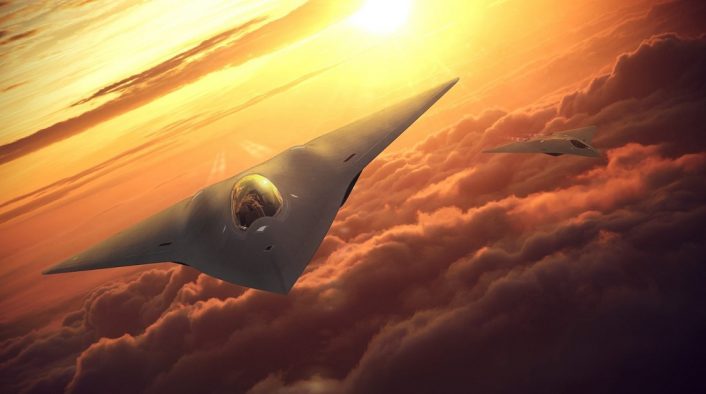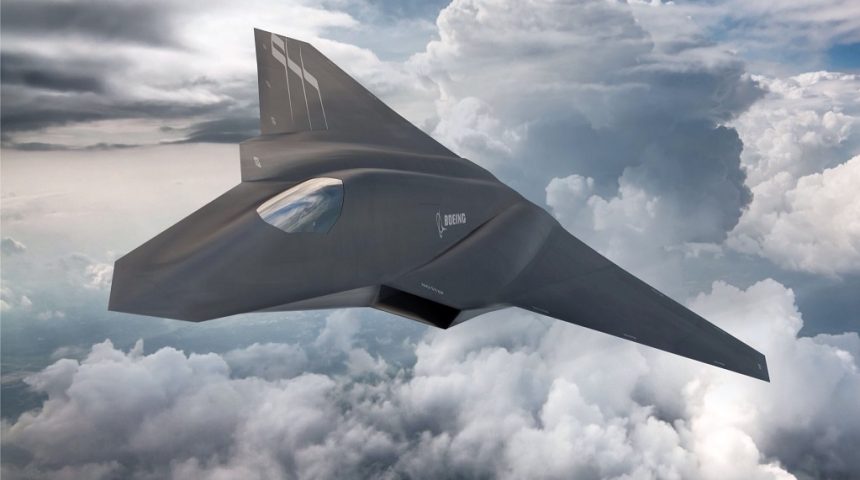The First Demonstrator Of A Next Gen. Fighter Aircraft has Already Flown With The U.S. Air Force.
Dr. Will Roper, the Assistant Secretary of the Air Force for Acquisition, Technology and Logistics, announced yesterday that the U.S. Air Force has secretly designed, built and flown at least one full-scale prototype of a new generation fighter aircraft, as part of the Next Generation Air Dominance (NGAD) program.
The existence of the demonstrator was first confirmed by Dr. Roper to reporter Valerie Insinna of Defense News during the Air Force Association’s virtual Air, Space and Cyber Conference 2020: “We’ve already built and flown a full-scale flight demonstrator in the real world, and we broke records in doing it. We are ready to go and build the next-generation aircraft in a way that has never happened before.”
HUGE NEWS: The Air Force has built and flown a full-scale flight demonstrator of its next generation fighter jet, its top acquisition official announces.@WILLROP3R spoke exclusively with Defense News about this massive development: https://t.co/WNMGgN6mDs
— Valerie Insinna (@ValerieInsinna) September 15, 2020
While the details about the aircraft are still classified, including its appearance, the first new fighter jet designed and flown in 20 years, since the Joint Strike Fighter competition between the X-32 and X-35, was designed using advanced Computer Aided Engineering (CAE) techniques and Digital Twin concepts to build and test a virtual version of the aircraft, before moving to physically build and fly the prototype.
The Air Force leadership assessed that this new approach for development and manufacturing, used also for the new T-7A Red Hawk trainer, could reduce the total life cycle cost of a next-generation fighter jet by 10% over 30 years compared to legacy fighters.
According to Defense News, Dr. Roper declined to comment on the number of prototypes, the manufacturer and the timing of development and first flight, the aircraft’s mission, unmanned or optionally manned capabilities, low observability and supersonic or hypersonic speeds.
Next Generation Air Dominance
Not to be confused with the homonym program of the Navy, the Air Force NGAD is reportedly intended as family of systems that could include aircraft, drones and other advanced technologies centered around a long-range, stealth fighter jet called “Penetrating Counter Air”, which would act as NGAD’s central node networked with sensors, drones and other platforms, an improved variant of the employment doctrine of the F-22 Raptor and F-35 Lighting II 5th generation aircraft. The program could also produce a family of fighters, each with its own specialization.

As already announced last year, the NGAD program is aiming to test a new rapid approach to develop small batches of fighters with multiple companies, completing the development and acquisition in an estimated five years.
To better explain the concept, Dr. Roper wrote a document titled “Take the Red Pill: The New Digital Acquisition Reality” where he describes how with the current approach, when an aircraft reaches 15 years of service, sustainment costs increase from 3% to 7% every year until it reaches the designed service life of at least 30 years.
The new proposed approach, called “Digital Century Series” (the name derives from the Century Series of game changing aircraft from the 1950s, from the F-100 Super Sabre to the F-106 Delta Dart), allows the Air Force to rapidly develop and buy aircraft more frequently thanks to new improved development and manufacturing techniques, buying new fighter jets approximatively every eight years and replacing them every 16 years, without the need for service life extensions or mid-life updates after the 3,500 flight-hour mark. Another advantage is development of specialized aircraft with an extremely high degree of commonality, moving away from the omnirole concept created with the F-35 and reducing the duration of the development.
According to Dr. Roper, the new approach of continuous development of the Digital Century Series could cause an increase of 25% of the development costs and 18% of the production costs, could also lead to a 79% reduction of modernization expenses and 50% of the sustainment costs.
The entire Digital Century Series should revolve around three principles: agile software development with software continuously developed, tested, released and updated based on the feedback, open architecture systems with modular hardware and software that allows rapid upgrades and integration of new, and digital engineering, or the use of advanced CAE and Digital Twin, as stated previously.








